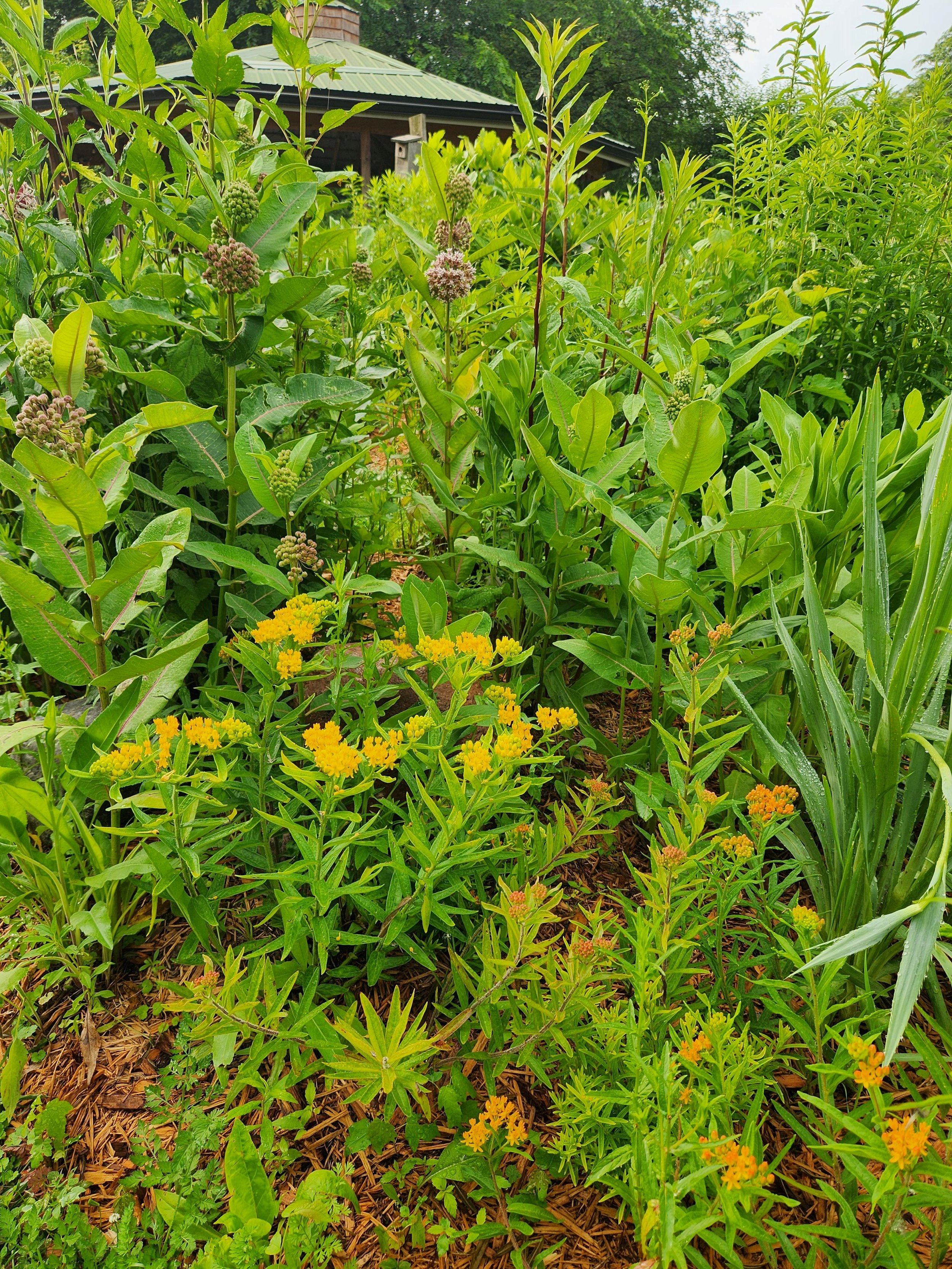Asclepias tuberosa, Butterfly Milkweed, Quart pot
Asclepias tuberosa, Butterfly Weed,Quart pot
FS-PS, Zone 3, blooms June - August, 2’ x 2’, medium to dry deer resistant
Asclepias tuberosa, the butterfly weed, is a species of milkweed native to eastern North America and very common in Michigan. It’s commonly known as “butterfly weed” because of the butterflies that are attracted to the plant by its color and copious production of nectar. This native milkweed is much shorter than other local varieties. Because it has a very long tap root, it doesn’t transplant well. You can, however, dig it up and relocate it if the plant is dormant. If any part of the tap root is left, it may regrow. Butterfly milkweed grows best in sandy to well-drained soil and full sun and is one of the first milkweeds to bloom in the spring. Unlike other milkweeds, it doesn’t have a milky sap, but rather a watery translucent sap.
Besides being a sought-after Monarch butterfly host plant, it attracts a wide variety of bees, beetles, wasps, flies, and butterflies, such as Fritillaries, Crescents, and Sulfurs. Bees, butterflies, and beetles visit this milkweed for nectar. Insects feed on the nectar, transferring sticky pollen sacs to other blossoms. Bumble bees and other large native bees are the most effective Butterfly Milkweed pollinators.
Asclepias tuberosa, Butterfly Weed,Quart pot
FS-PS, Zone 3, blooms June - August, 2’ x 2’, medium to dry deer resistant
Asclepias tuberosa, the butterfly weed, is a species of milkweed native to eastern North America and very common in Michigan. It’s commonly known as “butterfly weed” because of the butterflies that are attracted to the plant by its color and copious production of nectar. This native milkweed is much shorter than other local varieties. Because it has a very long tap root, it doesn’t transplant well. You can, however, dig it up and relocate it if the plant is dormant. If any part of the tap root is left, it may regrow. Butterfly milkweed grows best in sandy to well-drained soil and full sun and is one of the first milkweeds to bloom in the spring. Unlike other milkweeds, it doesn’t have a milky sap, but rather a watery translucent sap.
Besides being a sought-after Monarch butterfly host plant, it attracts a wide variety of bees, beetles, wasps, flies, and butterflies, such as Fritillaries, Crescents, and Sulfurs. Bees, butterflies, and beetles visit this milkweed for nectar. Insects feed on the nectar, transferring sticky pollen sacs to other blossoms. Bumble bees and other large native bees are the most effective Butterfly Milkweed pollinators.
Asclepias tuberosa, Butterfly Weed,Quart pot
FS-PS, Zone 3, blooms June - August, 2’ x 2’, medium to dry deer resistant
Asclepias tuberosa, the butterfly weed, is a species of milkweed native to eastern North America and very common in Michigan. It’s commonly known as “butterfly weed” because of the butterflies that are attracted to the plant by its color and copious production of nectar. This native milkweed is much shorter than other local varieties. Because it has a very long tap root, it doesn’t transplant well. You can, however, dig it up and relocate it if the plant is dormant. If any part of the tap root is left, it may regrow. Butterfly milkweed grows best in sandy to well-drained soil and full sun and is one of the first milkweeds to bloom in the spring. Unlike other milkweeds, it doesn’t have a milky sap, but rather a watery translucent sap.
Besides being a sought-after Monarch butterfly host plant, it attracts a wide variety of bees, beetles, wasps, flies, and butterflies, such as Fritillaries, Crescents, and Sulfurs. Bees, butterflies, and beetles visit this milkweed for nectar. Insects feed on the nectar, transferring sticky pollen sacs to other blossoms. Bumble bees and other large native bees are the most effective Butterfly Milkweed pollinators.







